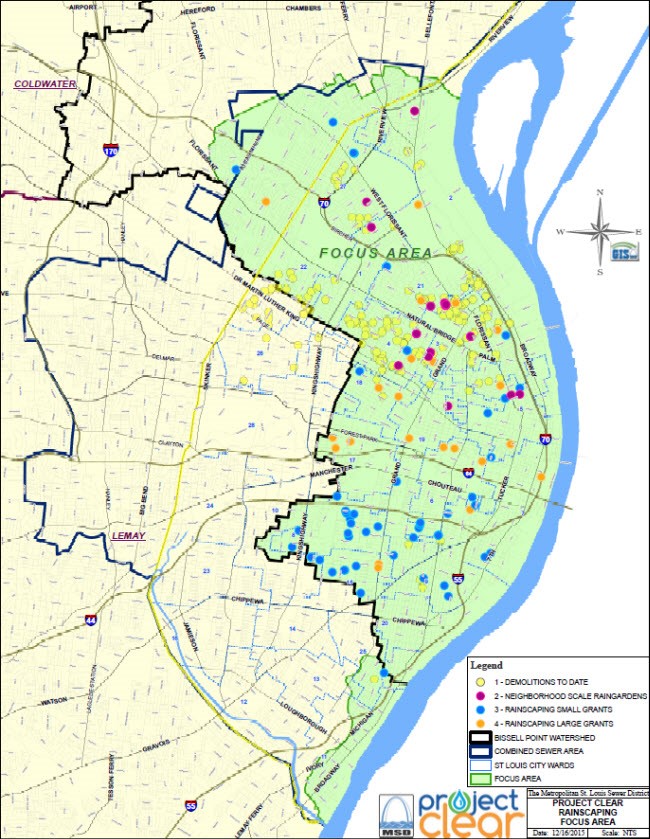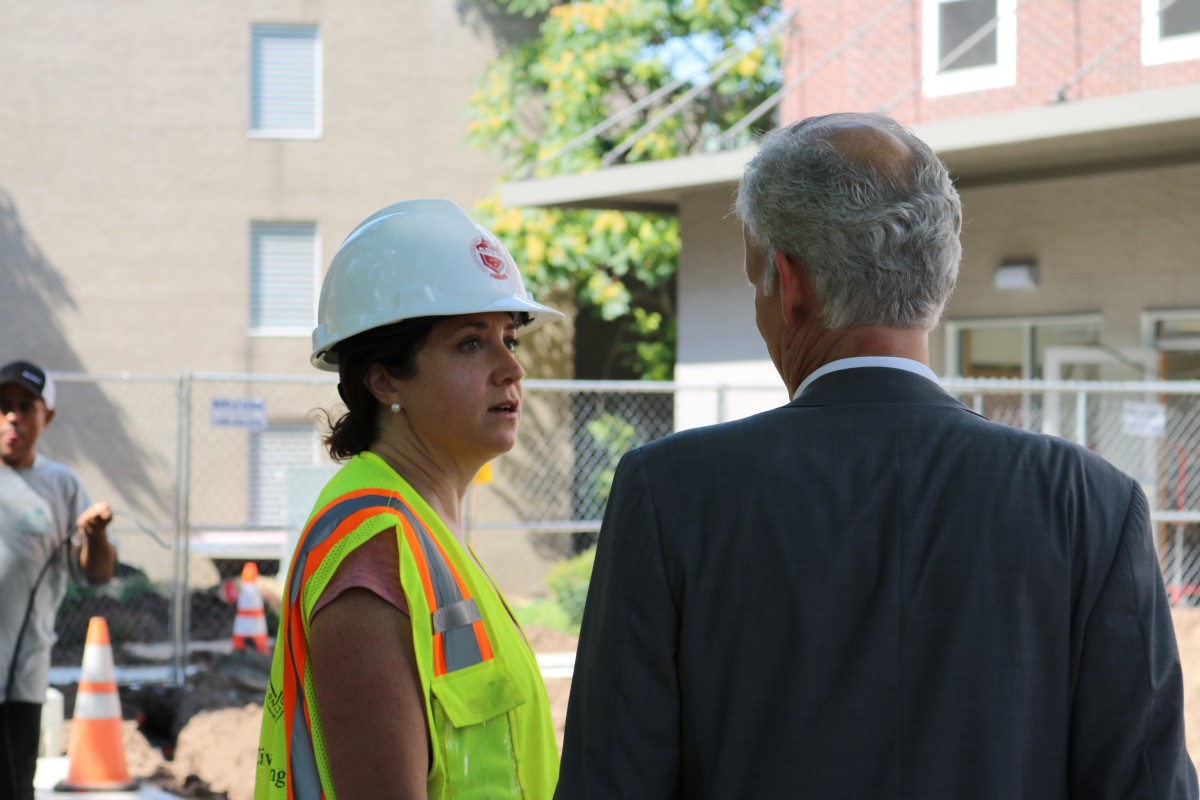
Project Clear Rainscaping focus area by the Metropolitan St. Louis Sewer District
On Dec. 22, the Metropolitan St. Louis Sewer District (MSD) announced a plan to complete $100 million in Rainscaping improvements to much of St. Louis City and portions of nearby North St. Louis County.
Rainscaping practices include such features as rain gardens, bioretention cells, pervious pavement, and green roofs that slow and soak up rainwater before it enters the sewer. Since 2011, MSD has built and tested Rainscaping, seeking to understand how the St. Louis region can best benefit from a large-scale program.
MSD will submit this Rainscaping Plan to the U.S. Environmental Protection Agency (EPA) on December 31, 2015. The Rainscaping plan is part of MSD Project Clear, the decades-long, multi-billion dollar commitment MSD has made to reduce sewer overflows, basement backups, and alleviate many wastewater concerns in the St. Louis region.
The Rainscaping Plan follows a 5-year, $3-million pilot program conducted by MSD to test Rainscaping solutions.
“After years of real-life, in-the-ground testing, we chose the priorities in this plan because the data showed our efforts worked; not only in the numbers, but in the communities that saw real benefits,” said MSD Executive Director Brian Hoelscher.
The plan calls for up to $13.5 million to remove hundreds of abandoned, structurally condemned buildings that present a threat to public health and safety.
The demolition of these buildings will produce dozens of acres of permeable ground, reducing runoff into the combined sewer system. This enables MSD to meet its obligations under the terms of a 2012 agreement with the EPA and Missouri Coalition for the Environment. The total demolition investment, as well as each portion of the Rainscaping Plan, is subject to the EPA’s analysis and approval.
The demolition of dangerous, abandoned buildings also addresses a strategic priority for neighborhoods across the City of St. Louis. Demolition investments are part of a national trend to stabilize challenged neighborhoods. The link between demolition investments and positive community impact is clear in other cities. According to an Oct. 2015 study by Dynamo Metrics, demolishing abandoned properties increased property values of occupied, single-family homes within 152 m (500 ft) by 4.2%. The study shows that removing blight increases community safety, stabilizes home values, and reduces foreclosure rates.
Through its Rainscaping pilot program, MSD selected four main priorities for the final plan:
- Demolitions of abandoned, structurally-condemned buildings ‒ during its 5-year pilot program, MSD invested $1.5 million to demolish 221 abandoned, condemned buildings owned by the St. Louis City Land Reutilization Authority.
- Neighborhood-scale, Rainscaping solutions built and owned by MSD ‒ during the pilot program, through a total investment of about $1.25 million, MSD constructed 13 planter boxes, 3 raingardens, 13 soil amendments, 4 bioretention cells, and 2 bioretention cells with detention basins.
- Small Rainscaping grants to individuals and community partners ‒ Through two rounds conducted to date, MSD has awarded 59 grants at up to $3,000 per grant for a total of $155,000.
- Large Rainscaping grants to larger-scale developers and community organizations ‒ Through three rounds conducted to date, MSD has awarded 21 grants totaling $17 million.






